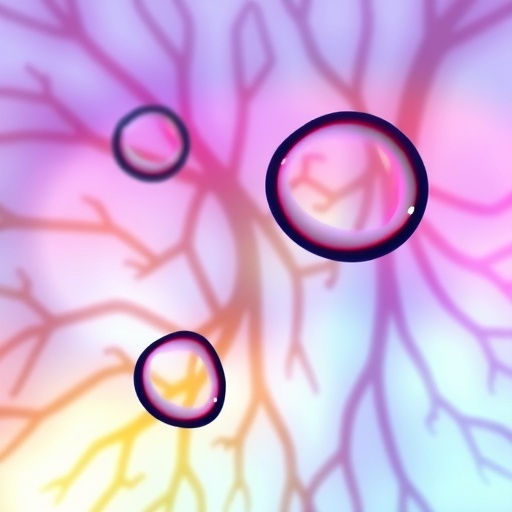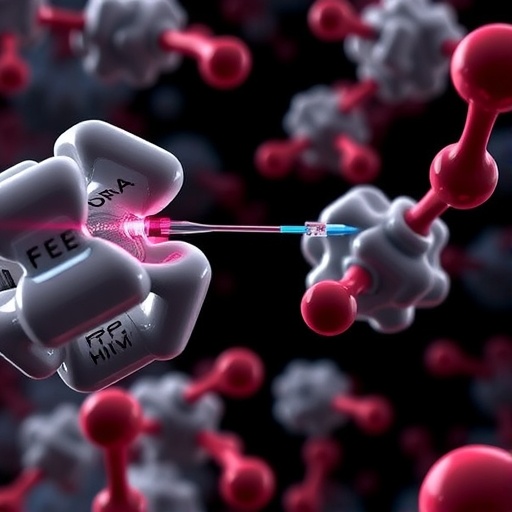In the rapidly evolving landscape of cancer research, an innovative mechanism has been unveiled, elucidating the role of nuclear transport processes in tumorigenesis. A groundbreaking study has demonstrated how an overabundance of exportin 1 (XPO1), also known as CRM1, in cancer cells contributes to the aberrant localization of crucial nuclear export cargoes. This phenomenon is not merely a cellular curiosity; rather, it has profound implications for cancer biology and therapeutic intervention strategies.
The conventional understanding of nuclear transport has undergone significant revision, especially in light of recent advances in the development of Selective Inhibitors of Nuclear Export (SINEs). These compounds, including the well-known anticancer agent selinexor, operate by inhibiting XPO1–cargo interactions. By exploiting the vulnerabilities in the nuclear export pathway, SINEs restore the correct nuclear localization of vital cellular proteins involved in tumor suppression and other critical functions. In essence, these inhibitors act as a corrective force, addressing the miscommunication that arises due to XPO1 overexpression in cancer cells.
But the role of SINEs extends beyond mere inhibition; they possess a remarkable ability to instigate the degradation of XPO1 itself. This process is mediated by the Cullin–RING E3 ligase (CRL) substrate receptor ASB8, which has recently emerged as a pivotal player in the targeted degradation of XPO1. In a stunning revelation, researchers employed cryo-electron microscopy (cryo-EM) techniques to visualize the binding of ASB8 to a previously cryptic site on XPO1, a site that becomes accessible only following SINE conjugation. This breakthrough provides critical insights into the structural dynamics governing XPO1 function and degradation.
Unlike traditional molecular glue degraders that facilitate the recruitment of ligases to substrates through direct interactions, SINEs adopt a unique mechanism of action. They bind to XPO1 independently of the ASB8 receptor, triggering an allosteric change that enhances the affinity of ASB8 for XPO1. This allosteric modulation is not merely a biochemical curiosity; it represents a profound shift in our understanding of how targeted protein degradation can be achieved through small molecules. The findings challenge the conventional paradigms and open new therapeutic avenues in the fight against cancer.
The research further illuminates the versatility of cellular mechanisms that govern protein degradation. Notably, ASB8-mediated degradation is not solely confined to synthetic SINE compounds. The endogenous compound 4-octyl itaconate, a derivative of itaconate, has emerged as a natural trigger for the degradation of XPO1 through the same ASB8-mediated pathway. This observation underscores the potential for leveraging native cellular processes in therapeutic design, presenting a paradigm shift in how we approach drug development.
The implications of these findings extend beyond the XPO1 pathway, suggesting that the principles of allosteric modulation and targeted degradation can be applied to other therapeutic contexts. Researchers are now considering how the allosteric mechanisms unveiled in this study might inform the development of next-generation degraders that can precisely modulate protein levels within the cell. Such strategies could revolutionize the way we address oncogenic drivers, allowing for selective targeting of aberrant proteins that contribute to tumor pathology.
Furthermore, the capacity of SINEs to exploit the existing cellular recycling machinery highlights the intricate interplay between drug design and natural biological processes. The therapeutic implications are significant, given that targeting XPO1 with SINEs not only restores the balance of nuclear transport but also paves the way for the development of combination therapies that could augment the efficacy of existing cancer treatments. These insights could shape future research directions and therapeutic strategies, fostering collaborations between chemists, biologists, and clinicians.
As the scientific community grapples with the complexities of cancer biology, the revelations surrounding XPO1 and its manipulation through SINEs may offer a beacon of hope. This research not only enhances our understanding of cancer cell biology but also equips researchers with valuable tools to develop more effective and precisely targeted cancer therapies. It represents a significant leap forward in our collective fight against cancer and underscores the necessity of viewing cancer not just as a collection of diseases but as a highly adaptive and dynamic biological challenge.
In conclusion, the allosteric mechanisms of XPO1 degradation offer a tantalizing glimpse into the future of targeted cancer therapies. By elucidating the structural interactions that govern this process, researchers are paving the way for innovative drug discovery efforts. The study exemplifies the potential of modern molecular biology techniques to unlock the secrets of cellular machinery and harness them for therapeutic gain. As researchers continue to explore and expand upon these findings, the horizon for effective cancer treatments grows ever brighter.
This transformative research invites further exploration and inspires confidence that we are not merely spectators in the battle against cancer, but active participants in uncovering and applying the fundamental scientific principles that can lead to breakthroughs in cancer therapy.
Subject of Research: Mechanisms of XPO1 degradation and its implications for cancer treatment.
Article Title: SINE compounds activate exportin 1 degradation through an allosteric mechanism.
Article References:
Wing, C.E., Fung, H.Y.J., Kwanten, B. et al. SINE compounds activate exportin 1 degradation through an allosteric mechanism.
Nat Chem Biol 21, 2002–2013 (2025). https://doi.org/10.1038/s41589-025-02058-0
Image Credits: AI Generated
DOI: 10.1038/s41589-025-02058-0
Keywords: XPO1, SINEs, cancer therapy, protein degradation, ASB8, E3 ligase, allosteric mechanism, cryo-electron microscopy.
Tags: aberrant nuclear export cargoesCullin-RING E3 ligase functionexportin 1 degradation mechanismsmechanisms of cancer cell miscommunicationnuclear transport processes in tumorigenesisrestoring nuclear localization of tumor suppressorsrole of ASB8 in XPO1 degradationselective inhibitors of nuclear exportselinexor as an anticancer agentSINE compounds in cancer therapytherapeutic strategies for cancer interventionXPO1 overexpression in cancer cells





